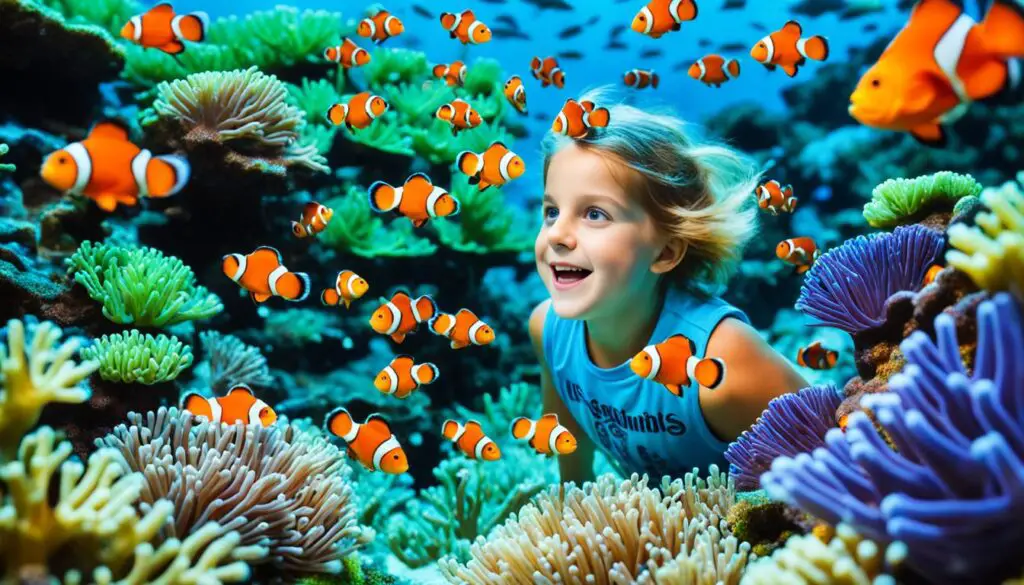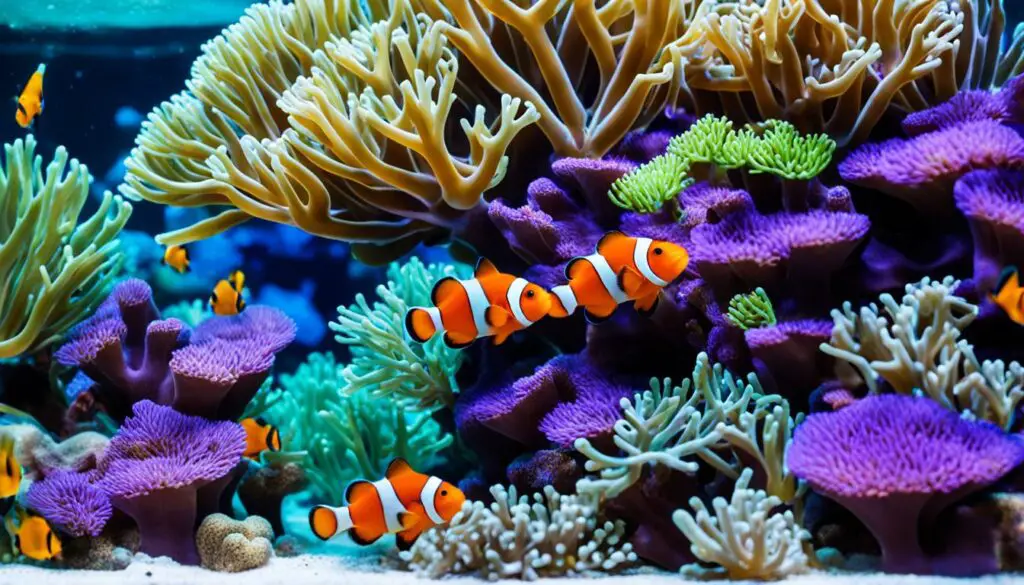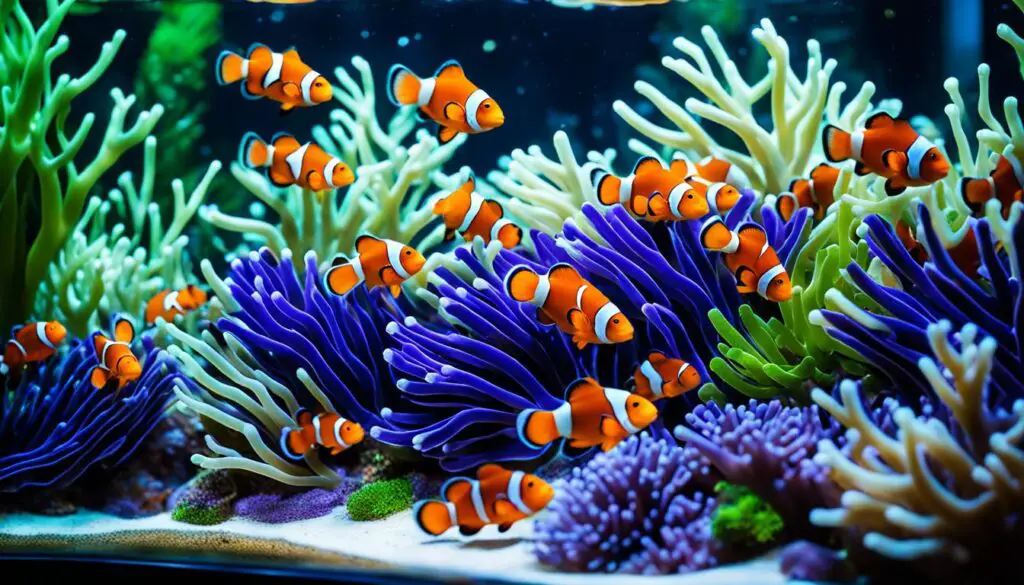Clownfish Juveniles: Nurturing Your Young Fish
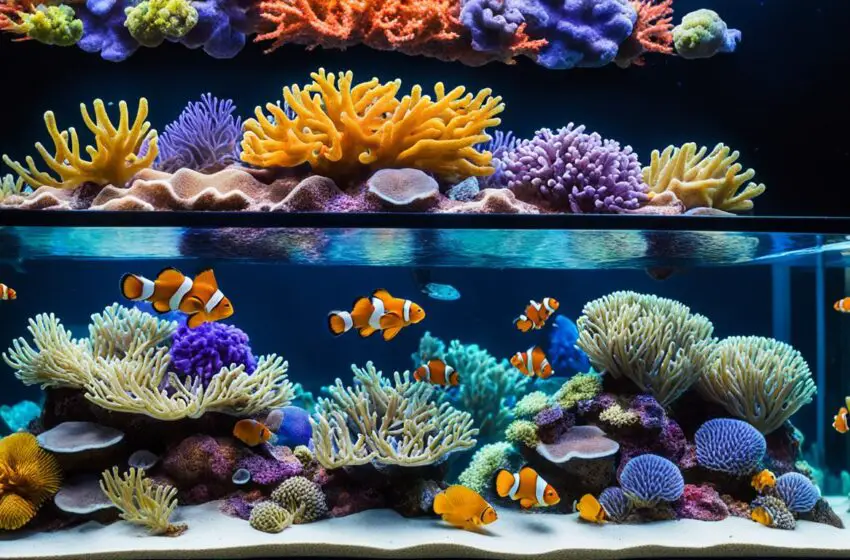
Clownfish are loved for their bright orange color and how they swim. Taking care of their young requires special skills. You need to know about their habits, who is in charge, and what they eat. This helps them do well in a tank at home. Let’s dive into how clownfish swim in tanks. We’ll also cover what you need to do to help these young fish grow in a healthy marine environment.
Key Takeaways:
- Clownfish juveniles require specific care and attention in a home aquarium.
- Understanding their natural behaviors and swimming patterns is crucial for their well-being.
- A hierarchy exists in a clownfish tank, with a dominant female at the top.
- Proper feeding and replicating their natural habitat are essential for nurturing clownfish juveniles.
- Their unique relationship with anemones can be mimicked in a home aquarium for their benefit.
Swimming Patterns of Clownfish Tank
Clownfish, like those in “Finding Nemo,” have unique ways of swimming and behaving. They live in groups. In each group, there’s a leader female, a smaller male, and young clownfish.
The group’s order is very important. The big female leads the group and decides what they do. The small male and the young ones follow her. This setup helps the group work well together.
When the top female clownfish dies, things change a lot. The small male becomes big and takes over as the female leader. This shows how flexible and strong clownfish are.
When the male changes into a female leader, the biggest young clownfish becomes the new male. This shows how the group adapts to changes in their leader.
Knowing how clownfish groups work is key to caring for them in aquariums. Watching their social behaviors lets aquarium owners make a good home for these colorful fish.
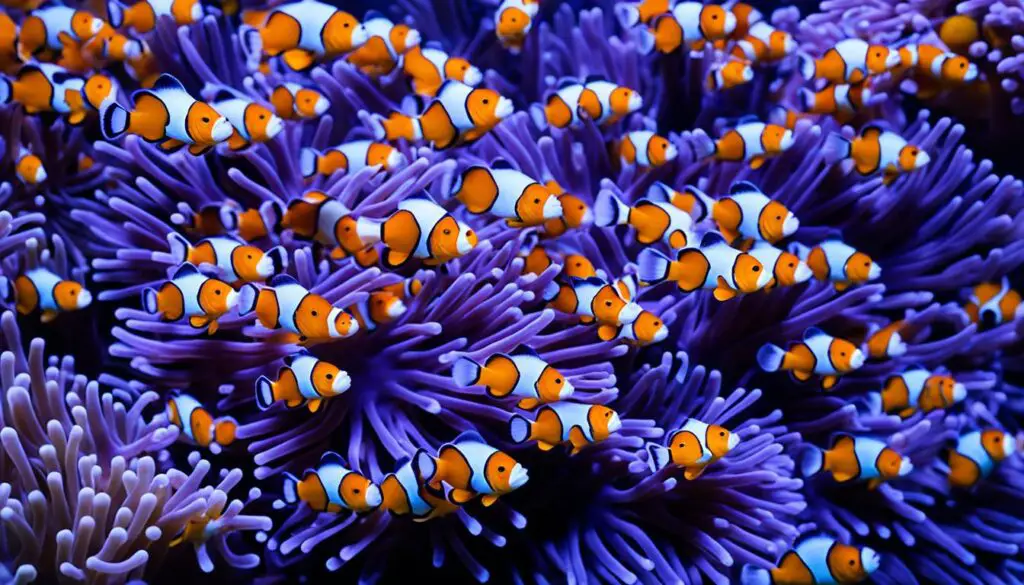
Detailed Clownfish Tank Swimming Patterns
| Swimming Patterns | Description |
|---|---|
| Schooling | Clownfish often swim together in a close-knit group, called a school, for safety and fun. |
| Darting | If scared, clownfish move quickly between corals to protect themselves. |
| Hovering | They can also stay still in the water by moving their fins, a cool trick they have. |
| Exploring | Clownfish love to see new things and find new places to hide. |
| Feeding | They swim close to anemones to eat, always making sure they’re near food. |
Nurturing Clownfish Juveniles for a Thriving Marine Habitat
Nurturing clownfish juveniles means setting up the right tank and feeding them well. It’s important to make their tank feel like their natural home. This includes adding hiding places like live rock and coral to make them feel safe.
Clownfish are known for living with anemones in the wild. While it’s hard to have real anemones in a tank, providing similar structures or hiding places is good for the fish. This helps mimic their natural symbiotic relationship.
Proper feeding is a key part of caring for clownfish juveniles. They eat algae off anemones in the wild, so include algae-based foods in their diet. This ensures they get the right nutrients for their health and growth.
With the right tank setup and proper diet, clownfish juveniles can thrive. Watch their behavior and adjust as needed to keep them happy and healthy.
FAQ
Can clownfish be kept in a home aquarium?
Yes, you can keep clownfish in your home aquarium. But, keeping them healthy means setting up the right tank. You also need to take good care of them.
What are some important swimming patterns of clownfish in a tank?
Clownfish have fascinating ways they swim and hang out in aquariums. They set up a pecking order with a main female, a smaller male, and the kids. When the leading female goes, the man becomes a leader. And the biggest kid takes the smaller male’s role.
How should I nurture clownfish juveniles in a home aquarium?
To raise baby clownfish, start with a suitable tank. It should feel like their natural home, with nooks and crannies for hiding. Adding live rocks and the right structures are crucial.
Even though recreating their bond with anemones is hard, offer them great hiding places. This helps baby clownfish feel safe and secure.
Source Links
- https://www.rom.on.ca/en/collections-research/magazine/think-nature-isnt-queer
- https://medium.com/@fishnurture/unknown-facts-on-what-do-clownfish-eat-fish-nurture-1fa354e89ad?responsesOpen=true&sortBy=REVERSE_CHRON
- https://reefbuilders.com/2022/04/22/shrinking-tank-bred-clownfish-makes-them-more-difficult-to-keep/

